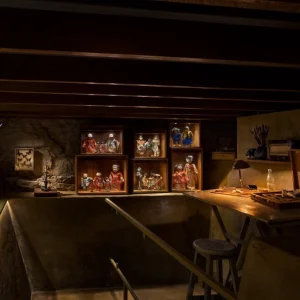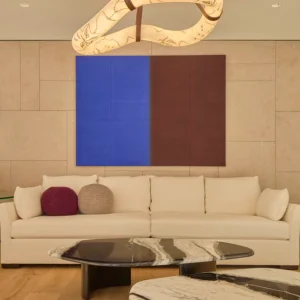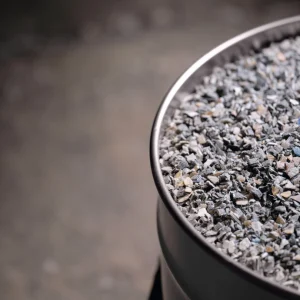The futuristic 5,200 metre museum has been designed by London-based architectural and design practices Future Systems and Shiro Studio, and is housed in a 19th century house, which was built by Enzo Ferrari’s father in 1830.
The museum features yellow car bonnet-shaped roof constructed from aluminium in a yellow finish to symbolise the colour of the city of Modena, which was chosen by Enzo Ferrari as the background for his racing team’s “prancing horse” logo.
A big modern white hall is featured inside the museum which is designed to make visitors perceive the space as a whole, where walls and floor transition smoothly into one another. The fully restored birthplace features a multimedia presentation portraying the most significant events in Ferrari’s life.
The building features curving details inspired by the curves of luxury sport cars. All the models are displayed in the room. The curved walls of the museum are made of translucent materials to create the effect of softness and airiness. The museum is spread over two levels with more then a half of the main exhibition building set below ground level.
Enzo Ferrari museum has also been designed according to the ecological parameters. In summer, special thermo-sensors enable decrease in energy use as cool air circulates inside the building. This is the first geothermal museum in Italy with the energy used to heat and cool the halls. Photovoltaic technology and water recycling systems are other eco-friendly solutions used.
All products of the great Italian brands held in international collections or on loan from prestigious museums are exhibited in the museum. They include the Alfa Romeo 40-60 of 1914, the type of car later raced by Ferrari as a member the Alfa team. Another exhibit is the twin-engined Alfa Romeo Bimotore of 1935, as raced by the Scuderia Ferrari which Enzo had founded in Modena in 1929 and which practically became the works Alfa team.
The remainder of the exhibits celebrate the history of car-making in the Modena area, with a plethora of historical documents and automobilia.





